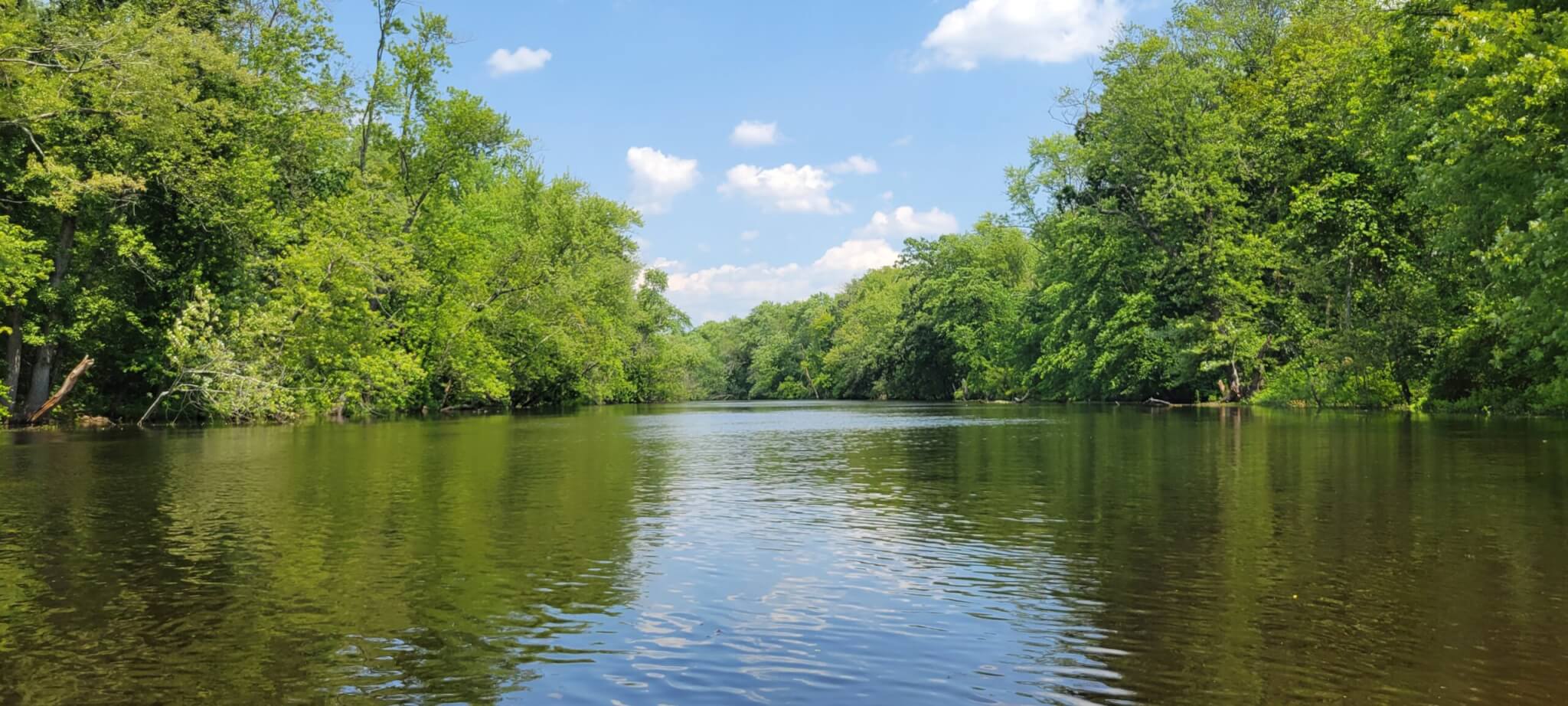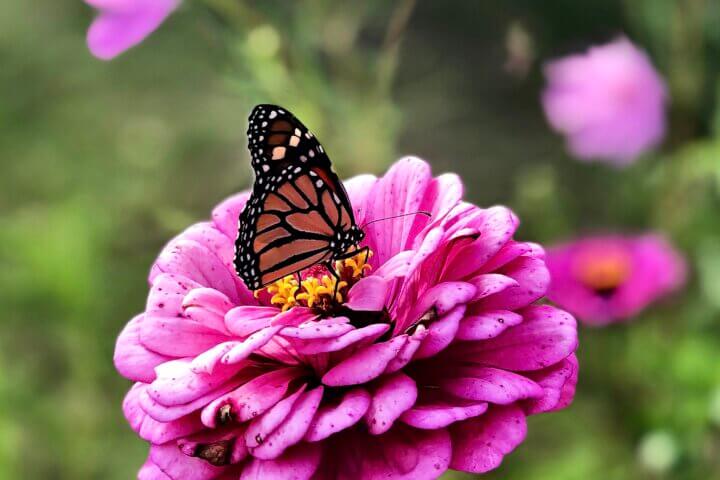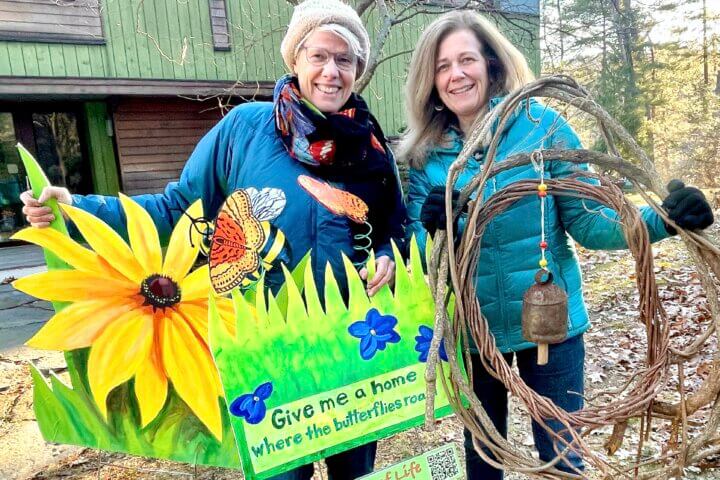The Concord River, formed near the center of town at the confluence of the Assabet and Sudbury rivers, plays an important role in the iconography of American politics and philosophy. It also shows the effects of centuries of human intervention.
Illustrations of the colonial militia firing at British soldiers on the rude bridge in 1775 abound. A reproduction of the Emerson boathouse is within sight of the National Park. Henry David Thoreau wrote about his favorite places along the waterway.
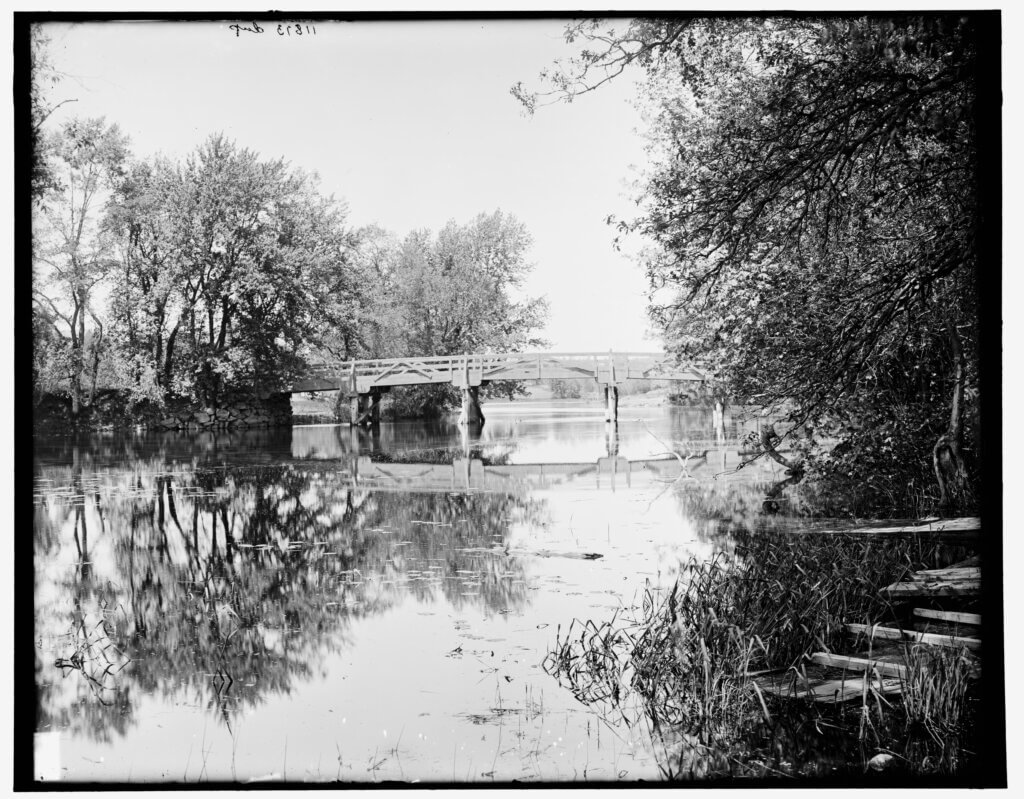
By the 1700s, humans had changed the waterways. Every time a dam was built to power a simple mill or a bridge went up, the changes increased the waterflow, said Elissa Brown, the river ambassador for the Sudbury, Assabet & Concord Wild & Scenic River Stewardship Council, causing changes to the banks.
In 1798, farmers sued when a dam was built in Billerica as part of the Middlesex Canal project linking the Merrimack River with Boston, wrote Brian Donahue of Brandeis University in a 1989 paper, Dammed at Both Ends and Cursed in the Middle: The “Flowage” of the Concord River Meadows, 1798 – 1862. The meadows along the sides of the slow-flowing rivers became wetter, resulting in less hay for winter fodder.
Earlier farmers themselves had already changed the meadows by installing drainage to make them drier and more accessible, Donahue wrote.
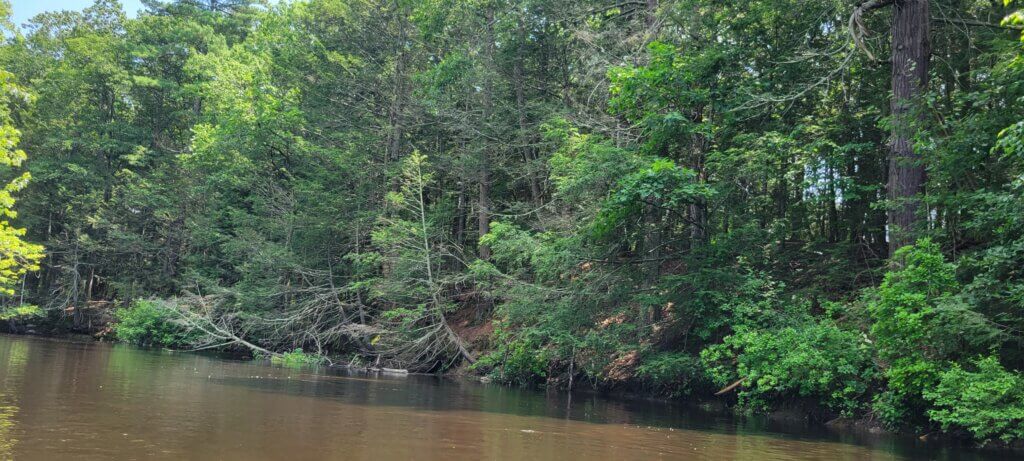
During a kayak trip on a rare dry-ish day in July, Brown pointed out places and things that have changed due to mankind’s intervention over the centuries.
Thoreau visited Leaning Hemlocks, an area near the end of the Assabet River. Hemlocks are still there, and still leaning. Brown noted the undercutting of the bank caused by increased water flow, continuing to destabilize growth.
Hemlocks in forests are dying off, according to the book Hemlock: A Forest Giant on the Edge edited by David R. Foster, senior lecturer on biology and director of the Harvard Forest. The woolly adelgid, a small insect from Asia, is sucking the sap from the trees and killing them, slowly.
After weeks of rain, the water was much higher in mid-July than it was a month earlier, said Ellie Sablak, assistant ambassador for the SuAsCo Wild & Scenic River Stewardship Council.
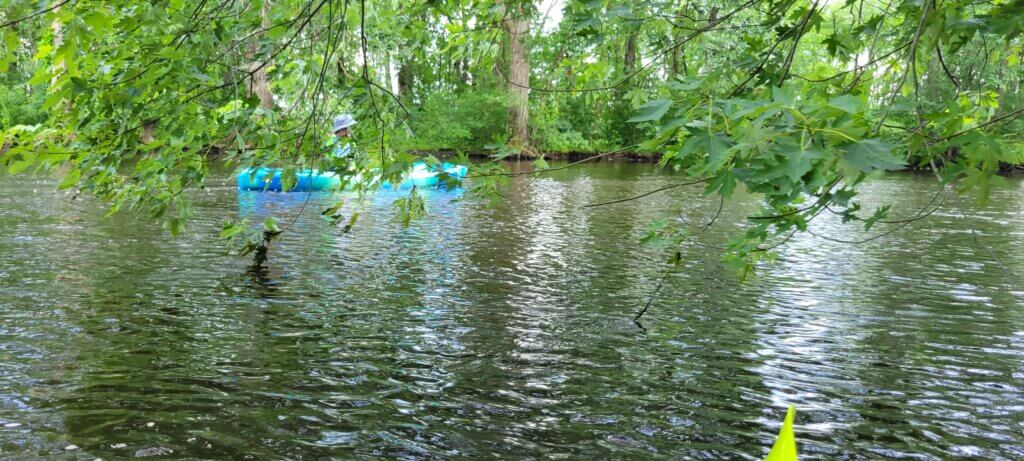
Climate change plays a role in this deluge. As temperatures rise, more moisture is in the air, increasing the potential for more rain, as upper New York and New England experienced in July, Mathew Barlow, professor of climate science at UMass Lowell, wrote for theconversation.com.
Brown and Sablak kept an eye out for beaver, reacting whenever something sizable splashed to the surface of the water. Sablak has seen lodges on other stretches of the river.
The surfacing animals might be carp, Brown said. The non-native, invasive species can cause extensive damage to aquatic vegetation, according to the Lowell Parks & Conservation Trust in its pamphlet Concord River Greenway: River Life.
Houses line the river. Some are hidden, screened by growth. Other property owners have cleared the banks to see the river, which could lead to further erosion. Work done within the 200-foot wetland boundary is supposed to be okayed by the Conservation Commission, but some is done without permission, Brown said.
Invisible changes to the river lie below. Due to mercury contamination from Nyanza, Inc. in Ashland, now a Superfund site, fish from the Sudbury River downriver through the Concord should not be eaten, Brown said.
The site is one of three in Massachusetts getting additional funding for cleanup under President Joe Biden’s Bipartisan Infrastructure Law, the U.S. Environmental Protection Agency announced in February 2023.
The rivers are enjoying a comeback. They are cleaner than she has ever seen, Brown said.
Concord maintains a boat ramp on Lowell Road just downriver from the confluence. Even a simple site like that can be a challenge to create, Brown said, between the expense and the permitting.
Bridges cross the rivers and trails lead down to it. Walkers can birdwatch and experience the rivers from the Great Meadows National Wildlife Refuge, where old impoundments still attract waterfowl.
The SuAsCo Wild & Scenic River Stewardship Council will be holding special events through August 13 to introduce folks to exploring, experiencing and enjoying the amazing rivers. Learn more at www.sudbury-assabet-concord.org.
And if you visit the Old North Bridge, you just might see a brightly colored kayak or more traditional canoe wending its way past. Perhaps the spirit of Thoreau, one of earliest naturalists, is tagging along, setting out for a day trip.
Have a great photo from the river? We’d love to share them! Please send to anne@theconcordbridge.org. Climate change tips and questions? Send them to climate@theconcordbridge.org.


